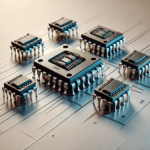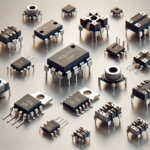
Introduction
Touch screen technology, found in everything from smartphones to sophisticated industrial control panels, has become an integral part of modern life. While built-in touch screens are popular, offering convenience and efficiency, they are also susceptible to wear and tear, damage, and cost concerns. To tackle these issues, many users opt for touch screen overlays to enhance the functionality and lifespan of their devices. But what exactly are they, and why should you consider them? This article illustrates various reasons a touch screen overlay is essential for both personal and professional uses.
What are Touch Screen Overlays? A Brief Overview
Touch screen overlays are thin, transparent layers that are placed over non-touch displays to add touch capabilities or enhance their existing touch functionality. These overlays can be applied to and are compatible with multiple types of displays, including LCD, LED, and plasma screens. A touch screen overlay is a cost-effective alternative to transform your non-touch displays into touch-sensitive interfaces. They use multiple touch technologies, including capacitive, resistive, and infrared, to detect and respond to touch inputs. Due to the exceptional features and unparalleled benefits of these overlays, they are widely used in commercial settings like retail stores, hospitals, and educational institutions and are increasingly popular in consumer electronics.
How Do Touch Screen Overlays Work?
Touch screen overlays work by incorporating a touch-sensitive layer on top of a display. This layer detects touch inputs, such as a finger or stylus, and transmits the data to the device’s processing unit. The technology behind touch screen overlays can vary, with common types including resistive, capacitive, infrared, and optical overlays. Moreover, each type has its unique way of detecting touch, making them suitable for different applications.
Touch Screen Overlays vs. Built-In Touch Screens: A Comparison Analysis
When comparing touch screen overlays to built-in touch screens, there are several factors to consider. Built-in touch screens offer a seamless and integrated experience but can be significantly more expensive and difficult to replace if damaged. Touch screen overlays, on the other hand, are more affordable, easier to replace, and can be added to existing screens. This makes overlays a more flexible and cost-effective option for many users.
What are the Most Popular Types of Touch Screen Overlays Available?
Touchscreen overlays come in various types, and understanding their types is essential to choosing the right one for your needs. The most common types include:
Projected Capacitive (PCAP) Touch Screen Overlays
Capacitive touch screen overlays are the most common type, detecting touch through the electrical properties of the human body. They are more sensitive and responsive but typically only work with bare fingers or special styluses.
Resistive Touch Screen Overlays
Resistive overlays work by detecting pressure applied to the screen. They are highly durable, support multi-touch gestures, and can be used with any object, including gloves. A resistive screen touch overlay is a popular choice for consumer electronics and interactive kiosks in industrial environments.
Infrared Overlays
These overlays use a grid of infrared light beams to detect touch. They are highly accurate and can work with any object, but they can be more expensive, are obstructed by dirt, and are complex to install.
Optical Touch Overlays
Optical overlays use cameras and light sensors to detect touch. They are used for larger displays and offer excellent touch sensitivity. Similar to resistive overlays, an infrared touch overlay can also be used with any object.
Why Do You Need? Exploring Key Reasons for Their Adoption
Touch screen overlays are an essential investment for anyone looking to make the most out of their digital displays. Some of the unparalleled benefits and reasons to adopt these overlays include:
Cost-Effective Upgrades of Existing Displays
One of the most compelling reasons to use touch screen overlays is that they offer a cost-effective alternative to purchasing new touch-enabled devices. Rather than investing in expensive touch-enabled displays, users can upgrade their existing devices to achieve similar functionality at a fraction of the cost. This is particularly advantageous for businesses that want to retrofit their current digital signage or equipment with touch technology without incurring the high costs associated with complete replacements.
Robust Durability and Protection
Touch screens are sensitive and expensive components prone to scratches, cracks, and other forms of physical damage, especially in high-traffic environments. Touch screen overlays act as a protective layer, shielding the screen from daily wear and tear. Additionally, a touch screen overlay adds durability to devices by protecting them against dust, dirt, and moisture.
Enhanced Functionality and User Experience
Touchscreen overlays are designed to enhance the user experience by improving the responsiveness and accuracy of the touch interface. High-quality overlays reduce lag and ensure that even the lightest touch is detected accurately. This is particularly important in precision applications, such as medical devices or interactive kiosks.
Customisation to Fit Any Screen
They are adaptable–they can be custom-fitted to any screen size, from small handheld devices to large digital signage. This versatility ensures that regardless of the original display technology, it can be upgraded to a touch interface, thus broadening its potential applications and enhancing user interaction.
Hygiene and Cleanliness
Maintaining hygiene for touch screens is crucial and challenging in sectors like healthcare, hospitality, and food services. Screen overlays can be easily cleaned and disinfected without damaging the underlying screen. Some overlays are even designed with antimicrobial properties, adding a layer of added protection against germs.
Easy Installation and Replacement
These components also benefit users in terms of their ease of installation and replacement. Unlike replacing a touch screen, which may require professional help and can result in downtime, overlays can be installed quickly and easily. If the overlay becomes damaged or worn out, it can be replaced without affecting the functionality of the device, ensuring minimal disruption.
Bottom Lines
Touch screen overlays are a vital accessory for anyone utilising touch screen technology. They offer protection, enhance durability, improve usability, and maintain hygiene, all while being a cost-effective solution. Whether it’s a point-of-sale system in retail, a control panel in manufacturing, a patient monitoring system in healthcare, or an interactive display in education, overlays provide valuable benefits and an investment worth considering.





















